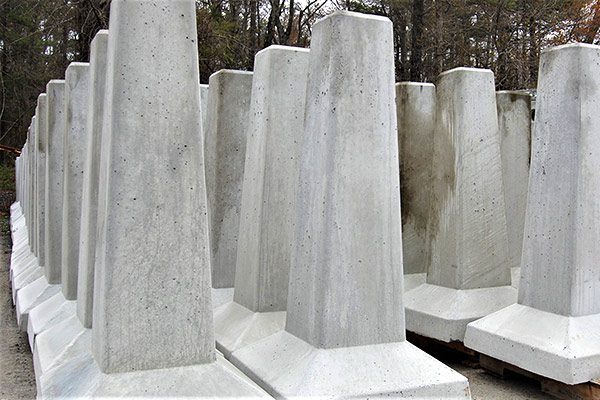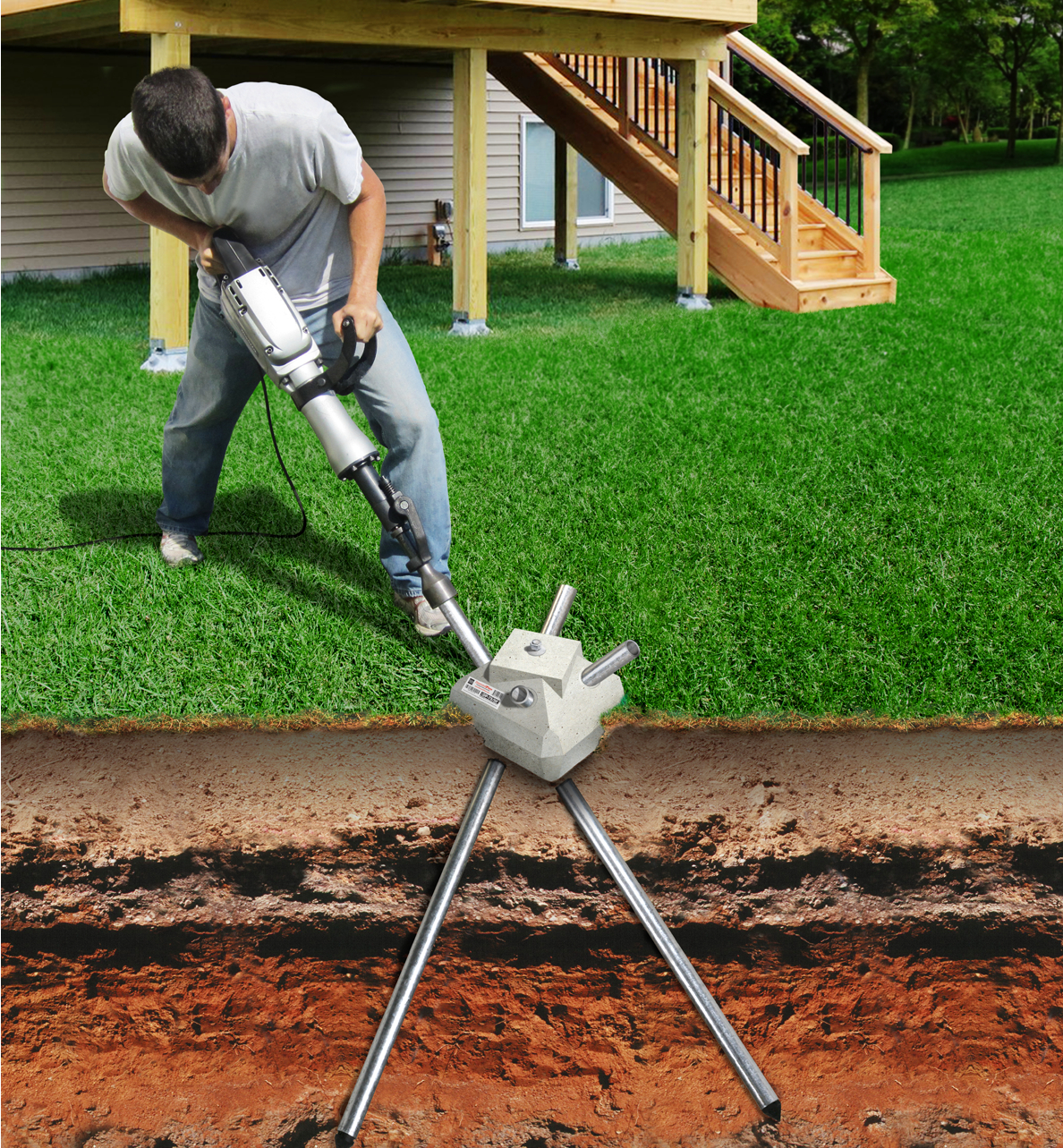Selecting the Right Deck Footings for Stability and Sturdiness
When it comes to building a deck, one of the most vital decisions you will make is picking the right footings for security and resilience. The long life and security of your deck depend greatly on the type of footings you pick, as they give the essential support and stability to endure the examination of time. With a myriad of alternatives offered, it can be overwhelming to establish which grounds are best fit for your certain needs. In this discussion, we will explore the numerous types of deck footings, think about the vital aspects to consider when deciding, and look into the pros and disadvantages of different options. By the end, you will have a more clear understanding of the selections handy and be better equipped to make an informed decision for your deck task.
Sorts Of Deck Grounds
These footings are composed of a round hole loaded with concrete, which provides a strong foundation for the deck articles. Concrete pier footings are reasonably simple to mount and offer superb stability, making them a prominent selection for numerous deck tasks.
An additional kind of ground is the helical heap ground. Helical heaps are steel shafts with helical plates affixed to them. These footings are set up by screwing them into the ground, which develops a secure foundation for the deck. Helical pile grounds are suitable for locations with difficult dirt problems, as they can be mounted in almost any type of kind of dirt. If needed., they likewise permit for easy adjustment and progressing of the deck.
Alternatively, some contractors go with precast concrete grounds. These grounds are made of long lasting concrete and can be found in various sizes and shapes to fit various deck styles. Precast concrete footings are hassle-free to set up and supply a secure base for the deck framework.
Lastly, one more alternative is the post-in-anchor ground system. This kind of footing entails driving a metal anchor right into the ground and attaching it to the deck article. It uses adaptability in regards to placing the deck blog posts and is appropriate for decks with lightweight structures.
When choosing the ideal type of deck ground, it is important to think about factors such as soil problems, deck load, and neighborhood building regulations (Deck Footings). Consulting with an expert specialist or structural engineer can assist ensure the suitable ground is selected for a safe and secure deck
Factors to Think About When Selecting Grounds
When choosing the appropriate footings for a deck, it is crucial to carefully consider various elements such as dirt problems, deck load, and adherence to regional building regulations. These variables play a significant duty in making certain the stability and sturdiness of the deck framework.
The type of soil on which the deck will certainly be built determines the kind of footings needed. On the other hand, decks developed on clay or expansive soils might need footings that can accommodate the dirt's tendency to broaden and contract.
One more essential variable is the deck tons. The weight of the deck, including the products used and any prospective online loads such as furnishings or events, need to be considered when picking grounds. The footings must be designed to bear the weight of the deck and disperse it evenly to stop any kind of architectural concerns or failings.
Finally, adherence to regional building ordinance is extremely important. Building regulations vary from region to region, and it is important to comply with the details needs established by the neighborhood authorities. Deck Footings. These codes ensure that the deck is developed securely and meets the necessary criteria for structural stability and load-bearing ability
Concrete Grounds: Disadvantages and pros

When utilized as the foundation for a deck,Concrete footings use a number of benefits and drawbacks. On the favorable side, concrete footings offer superb security and sturdiness. Concrete is a solid and inflexible material that can sustain heavy lots and hold up against different weather. It likewise has a long life-span, making it a dependable option for long-term usage.
Another advantage of concrete footings is their flexibility. They can be poured into various forms and sizes to fit various deck styles and arrangements. Concrete footings can be personalized to fit the certain needs and needs of the deck structure.
However, there are likewise some disadvantages to making use of concrete grounds. This can increase the total expense of the deck job and may need professional help.

Helical Piers Vs. Sonotubes: Which Is Better?
In considering the structure choices for a deck, the comparison in between helical piers and sonotubes is important in figuring out the superior option. Helical piers, likewise recognized as screw Related Site stacks, are steel shafts with helical plates connected to them. They are twisted into the ground utilizing hydraulic machinery, offering a secure and long lasting structure for the deck. On the various other hand, sonotubes are round types constructed from cardboard or fiber product that are full of concrete. They are placed in an opening went into the ground and provide support for the deck.
The helical plates on the piers create a solid grasp with the soil, changing or avoiding any kind of movement of the deck. Sonotubes, on the various other hand, depend entirely on the concrete filling up for stability, which may not supply the same degree of stamina and resistance.
In terms of installment, helical piers are relatively easier and faster to mount contrasted to sonotubes. The hydraulic machinery utilized to twist the piers right into the ground makes certain a reliable and fast process. Sonotubes, on the other hand, require digging openings and pouring concrete, which can be lengthy and labor-intensive.
In addition, helical piers are a more versatile alternative. They can be utilized in various soil problems and can be changed or enhanced if needed. Sonotubes, on the various other hand, may require extra support, such as rebar, in certain soil problems or locations with high tons requirements.
Picking the Right Footings for Your Deck's Measurements
For ideal architectural stability, it is important to carefully pick the suitable grounds that straighten with the measurements of your deck. The dimensions of your deck, including its height, size, and size, play a substantial role in determining the kind and dimension of grounds needed.
When picking footings for your deck, it is essential to consider the learn the facts here now load-bearing capability of the soil. The weight of the deck, combined with the weight of any type of furnishings or people on it, applies a substantial force on the grounds (Deck Footings). It is essential to choose footings that can effectively sustain this weight without sinking or moving over time.
The shapes and size of the footings need to likewise be considered. Larger decks with better measurements require larger grounds to offer adequate stability and assistance. The shape of the footings, whether they are rounded or square, depends upon the layout and design of the deck. Additionally, the deepness at which the grounds are installed should be identified based upon the frost line in your area to avoid any type of heaving or shifting as a result of freezing temperatures.
Conclusion
In conclusion, picking the appropriate deck grounds is critical for guaranteeing security and longevity. Variables such as the type of footings, the deck's dimensions, and the pros and disadvantages of different alternatives should be considered.
These grounds consist of a round hole filled up with concrete, which provides a strong structure for the deck articles. Concrete pier footings are reasonably simple to install and provide outstanding stability, making them a popular option for lots of deck projects.
Precast concrete footings are hassle-free to mount and give a steady base for the deck framework.
It supplies adaptability in terms of positioning the deck articles and is appropriate for decks with light-weight structures.
Concrete grounds use numerous advantages and disadvantages when used as the foundation for a deck.